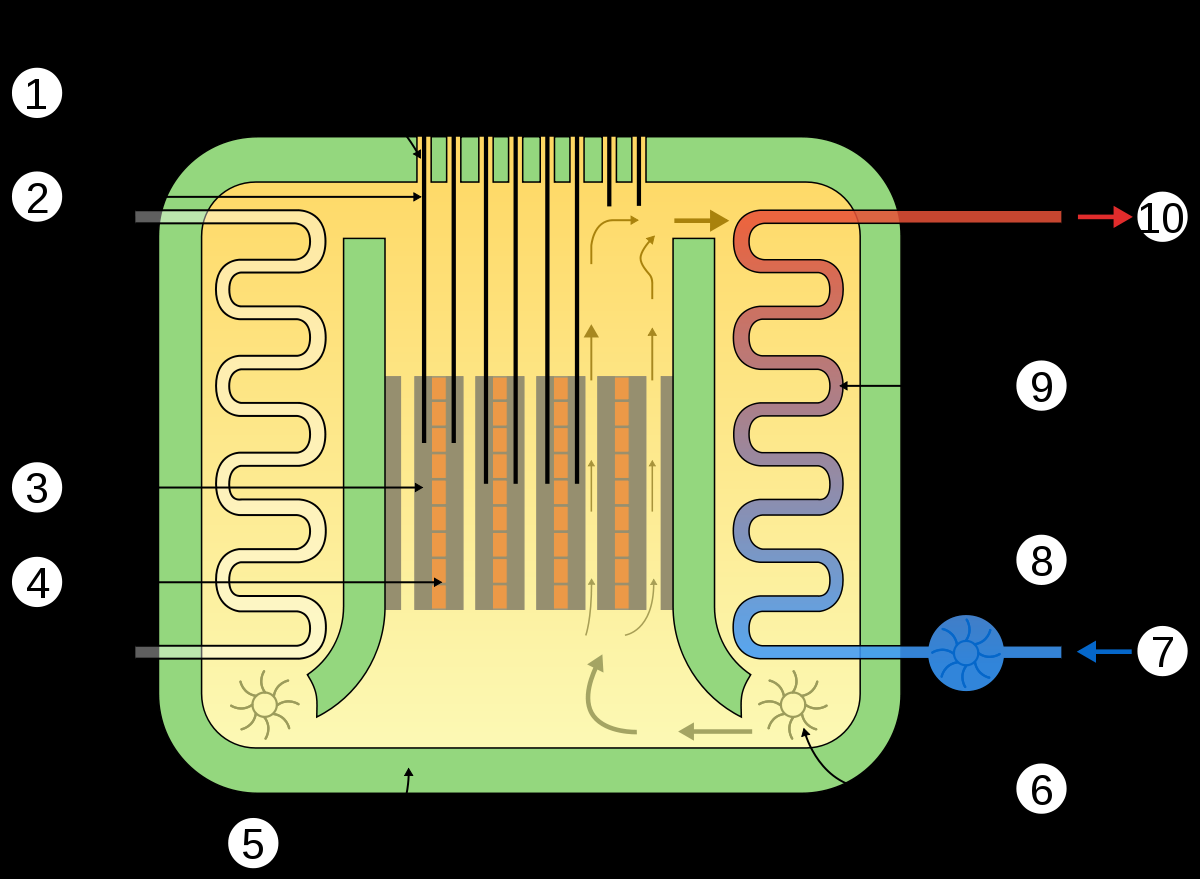"Nuclear graphite is any grade of graphite, usually synthetic graphite, specifically manufactured for use as a moderator or reflector within a nuclear reactor. Graphite is an important material for the construction of both historical and modern nuclear reactors, due to its extreme purity and its ability to withstand extremely high temperatures." (Wikipedia)
The size and shape of the small carbon crystals in the graphite blocks that are used as neutron moderators in reactors are damaged by radiation during the operation of the reactors. This is referred to as "dimensional change." The mechanical properties of the graphite are degraded by this dimensional change in the crystals. A major question in the safe operation of aging reactors is how long the graphite blocks in a reactor can continue to function as needed as they degrade. The blocks of graphite cannot be replaced or repaired once a reactor goes into operation.
"An Advanced Gas-cooled Reactor (AGR) is a specific type of nuclear reactor. These are the second generation of British gas-cooled reactors, using graphite as the neutron moderator and carbon dioxide as coolant." (Wikipedia)
In 2012, the Nuclear Research and Consultancy Group (NRG) launched a research program called ACCENT to research graphite degradation in AGRs for EDF, the French utility. Over a period of four years, the ACCENT program performed four consecutive irradiation stages on blocks of graphite under high temperatures and high radiation loads at the Flux Reactor in Petten, the Netherlands.
Before and after each irradiation stage, the graphite blocks had their physical and structural properties analyzed by the NRG Hot Cell Laboratory. At the end of the study, the probable degradation of graphite over the life span of an AGR was revealed. Studies of graphite degradation have been performed before in other laboratories in Britain and other countries. However, all previous studies had flaws that reduced their reliability. NRG claims that their study has corrected these flaws and is highly reliable.
Following the end of the four year study just concluded, NRG is undertaking another research program for EDF that will study how graphite changes during irradiation and radiolytic oxidation. Under intense temperature and pressure, CO2 breaks down and forms CO3. This ion oxidizes the graphite and reduces its density which has an effect on the capability of the graphite to act as a neutron moderator.
Britain currently has fourteen operational AGRs. All of them are scheduled to be shut down by 2024. As they near the end of their operation lives it is very important to know that they will be safe to operate until then. The NRG studies for EDF will play a valuable role in verifying that the graphite blocks that are moderating neutrons in the British AGRs will be able to function as required during the last few years in the lives of these reactors. The NRG graphite studies will also be valuable to other countries using graphite moderators as they monitor the health of their aging reactor fleets.
Schematic diagram of an Advanced Gas-cooled Reactor type nuclear reactor:
1. Charge tubes
2. Control rods
3. Graphite moderator
4. Fuel assemblies
5. Concrete pressure vessel and radiation shielding
6. Gas circulator
7. Water
8. Water circulator
9. Heat exchanger
10. Steam
